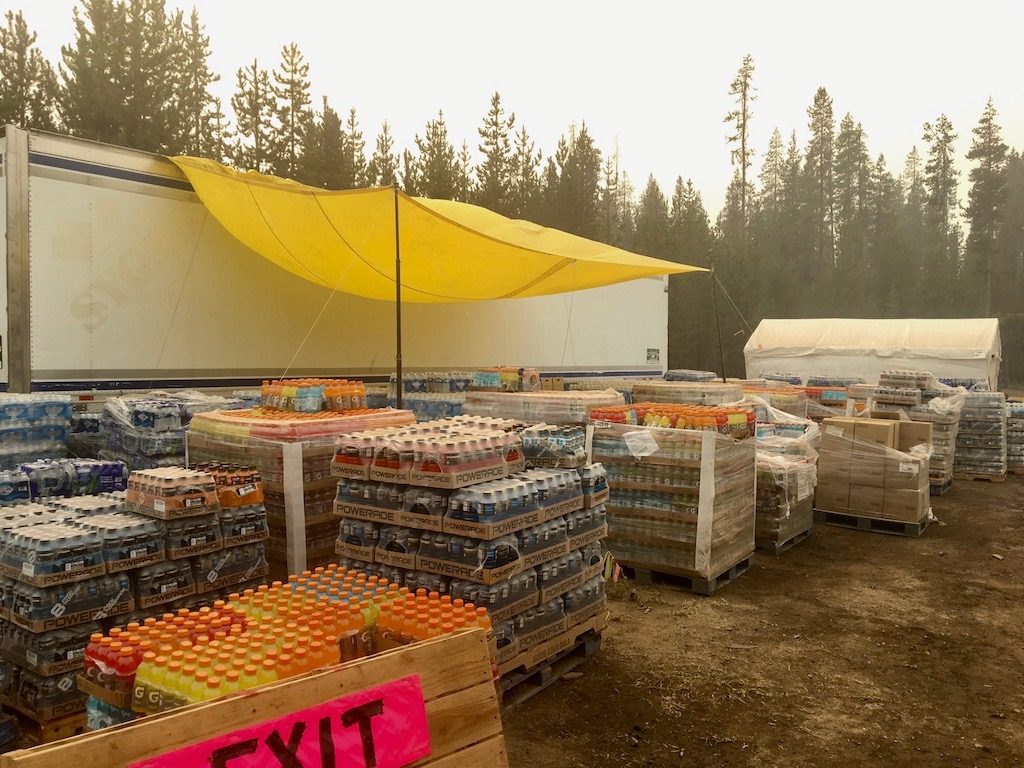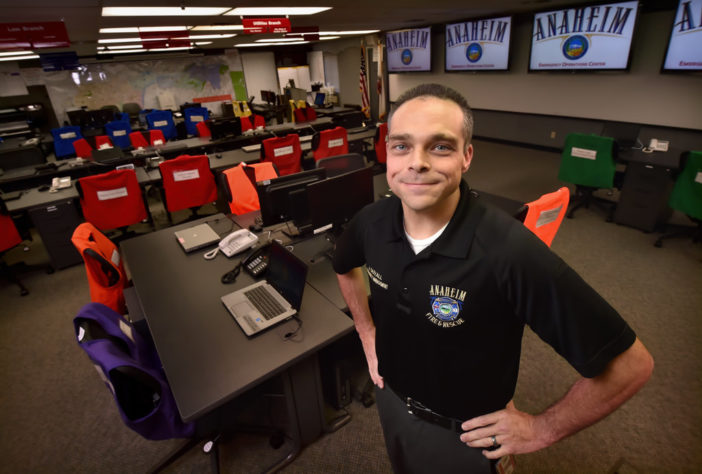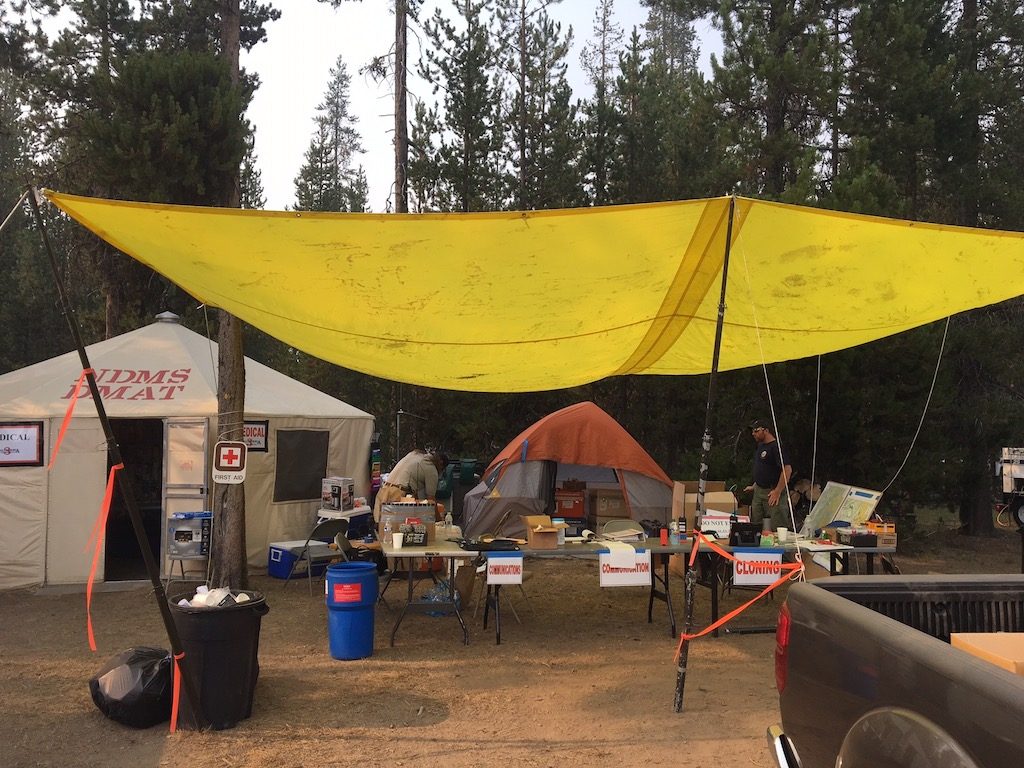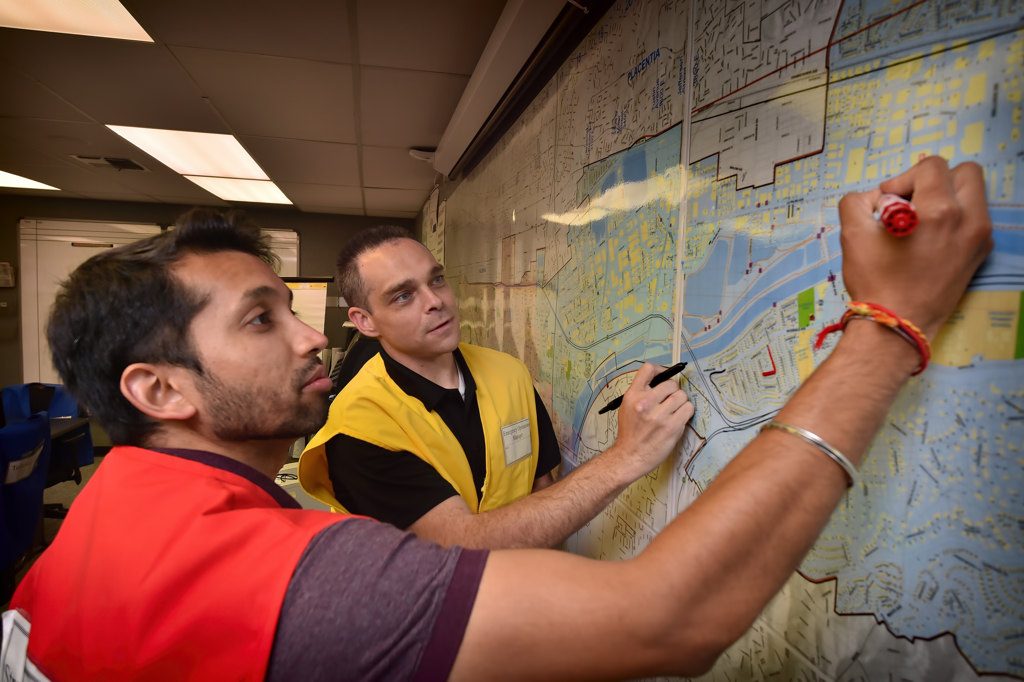Jeff DuVall isn’t really into disaster movies.
But daily, as an administrative analyst with Anaheim Fire & Rescue’s Emergency Management and Preparedness Section, he contemplates worst-case scenarios — earthquakes, floods, wildfires — and how best to prepare for them.
“I plan for the city’s worst nightmare,” DuVall says. “And I pray it never happens.”
As far as disasters go in the U.S., it’s been a nightmarish several weeks, with Hurricanes Harvey (eerily timed, it seems, just before National Preparedness Month in September), and Irma, which started Aug. 30 and continued through Sept. 12.
Those extremely destructive hurricanes killed more than 100 and forever altered the lives of thousands.
And a disaster of even more horrific scale could hit Orange County, with a major earthquake, wildfire or massive flooding topping the list of local concerns.
“When it (major natural disaster) happens, you’re not going to have time to think (of what to grab before evacuating),” says DuVall, who with a staff of four others (including fellow administrative analyst Sagar Patel) works out of Anaheim’s Emergency Operations Center, a temporary collection of portables housed in a city utility yard.
“People think they have time to prepare, but most put it off to another day,” DuVall adds. “Less than 10 percent of the nation is prepared for a disaster.”
It’s DuVall’s job to do what he can to get that percentage higher — much higher, if possible.
Which also is the aim of National Preparedness Month. Sponsored by the Federal Emergency Management Agency (FEMA), NPM’s mission is to encourage Americans to take steps to prepare for emergencies in their homes, businesses, schools and communities.
There are several simple things you can do to prepare yourself for the unthinkable, DuVall says, including:
— Take photos of important documents and email them to yourself so you can retrieve them later
— Have a plan with family members, including an out-of-state contact everyone can call to check in with in the event of a disaster
— Print out a list of important phone numbers and keep the list at work, home and in your car (your cell phone may die, and chances are you don’t have a lot of stored numbers memorized)
— Store at least three gallons of water per person to use per day, for one week. Don’t forget a week’s worth of granola bars, too.

Anaheim Fire & Rescue Administrative Analyst Jeff DuVall talks about Anaheim’s plans for when a big disaster hits.
Photo by Steven Georges/Behind the Badge OC
These and other disaster preparedness tips can be found this month on Anaheim Fire & Rescue’s Facebook and Instagram pages.
DuVall, a former dispatcher with MetroNet, the eight-agency fire emergency dispatch center housed at AF&R headquarters, loves mulling worst-case scenarios — and making sure plans are in place to deal with them.
“The field of emergency management is fun,” says DuVall, whose wife works as a trauma tech at a hospital. “There are a lot of what-ifs to think about. Ninety-percent of our job, when things aren’t going on, is looking at these ‘what-if’ scenarios.”
DuVall and the rest of the Emergency Management & Preparedness (EMP) staff are trained not only to safeguard Anaheim in the event of a disaster, but they also support surrounding O.C. cities. Dealing with Anaheim alone is a big task. The city has about 360,000 residents, but on an average day there are an additional 100,000 people at Disneyland and 5,000 to 10,000 people driving on city streets.
DuVall and the EMP staff also share their expertise and skills on regular deployments throughout the state, as well as other states, when emergencies happen.
“The City of Anaheim is awesome about sharing its resources to other jurisdictions and agencies when they need it,” DuVall says.
For example, DuVall recently spent more than two weeks on the still-burning High Cascades Complex Fire, a group of 20 fires chewing through fuel in four protected areas in Oregon: Crater Lake National Park, the Rogue River – Siskiyou National Forest, Umpqua National Forest, and the Fremont–Winema National Forest.
Duvall worked 14-hour days, every day, during that deployment, from Aug. 16-Sept. 2. He worked as a radio operator (dispatcher) and also as an incident communications manager, figuring out where to place radio repeaters and setting up a telephone system so officials at base camp could talk to crews in the field.
“We bring a communications system like we have here (at the EOC) to an incident,” DuVall explains. “Nine times out of 10, we have to set up our own communications system.”
The days are grueling.
“It’s like rough camping,” DuVall says.
In 2015, DuVall spent all of August deployed to three different complex fires in Northern California. He got his marching orders to go just before he and his wife were about to head off to a vacation in Lake Tahoe.
DuVall was asked to stay longer at the Cascades Complex Fire, but he declined because he needed to attend a niece’s wedding.
Anaheim’s EOC springs into action about four or so times a year to respond to a crisis, but it also is activated as a precaution when major events come to the city, such as the World Series or big political events like last year’s Trump rally.
“The EOC is where decisions are made and where requests are made and where all the coordination takes place,” DuVall says.
In January, for example, the EOC was activated during a severe winter storm. The storm ended up causing just under $1 million in damage to public infrastructure in the city, DuVall says.
Every city department has a role in the EOC, such as police and fire, utilities, public works and finance. Members from all the departments wear colored vests based on their roles (for example, a red vest is for operations, orange is logistics, blue is planning and intelligence, green is — no surprise here — finance and yellow represents management).

Some supplies at base camp at the High Cascades Complex Fire, which still is burning in Oregon. Photo courtesy of Jeff DuVall
“We call it fruit salad in here when something happens,” DuVall says.
At last year’s Trump rally, public works had to shut down certain roads and provide K-rails, while finance kept track what the incident was costing the city.
The EOC also is used for continuous exercises, including quarterly “table-top training,” where responders from different city departments run through various scenarios.
In a recent scenario, a wildfire broke out in the east end of the city. The logistics group, for example, had to come up with meal plans for firefighters. Anaheim PD representatives had to decide how to evacuate a school and control entry into neighborhoods after the fire died down. Utility reps had to come up with a plan to restore service, and the care and shelter team had to figure out what to do with animals.
In addition to the EOC, AF&R’s Emergency Management & Preparedness section is responsible for the management and oversight of grants, Homeland Security, the Orange County Intelligence Assessment Center and Hazard Mitigation Plan as well as the Community Emergency Response Team (CERT) volunteer program and Radio Amateur Civil Emergency Services (RACE) volunteer program.
When he was a dispatcher, DuVall got a first-hand lesson in the importance of being prepared in the event of a disaster.
He and his wife were living in the eastern section of Anaheim when, in November 2008, the Freeway Complex Fire erupted.
His wife called him at work.
“It’s getting closer,” she told him.
Soon, she called back.
“There’s a cop at the door and we need to evacuate. What do I do?”
Recalls DuVall: “I was speechless. We had never prepared for (a disaster).”
He told her to grab clothes, the home computer and important documents.
The DuValls now have a document box in a safe place, and irreplaceable belongings on one shelf so they can grab them and go.
“We got strategic about preparing for a disaster,” DuVall says.
So, too, should everyone else, he says.
 Behind the Badge
Behind the Badge







